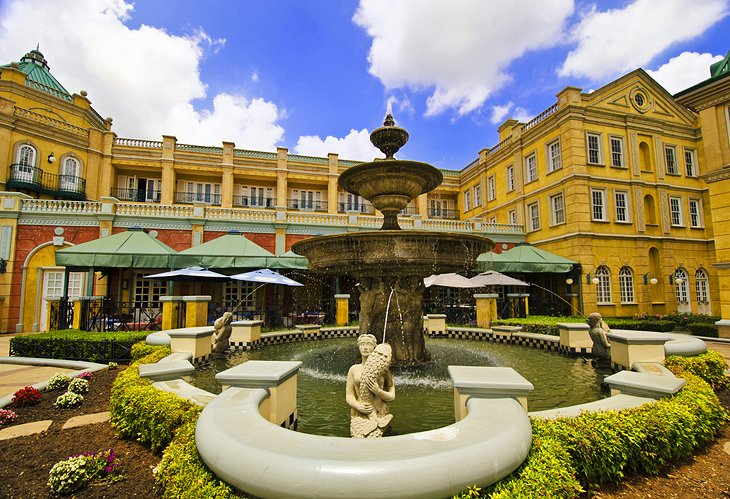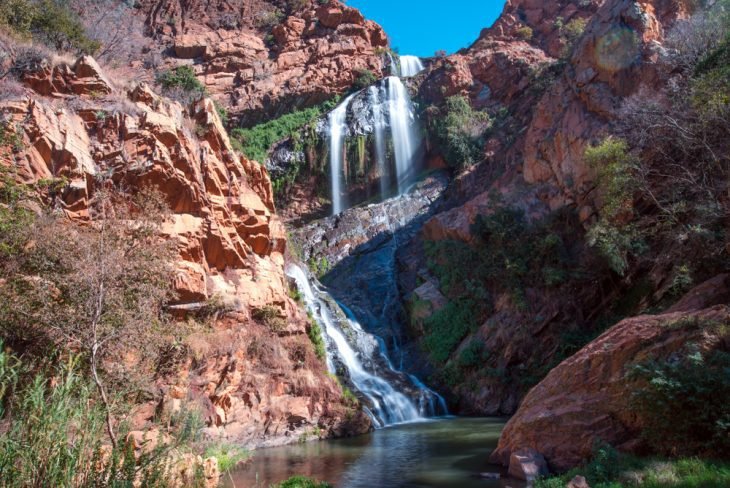The 8-Second Trick For Johannesburg North Attractions
Table of ContentsJohannesburg North Attractions Fundamentals ExplainedJohannesburg North Attractions Fundamentals ExplainedUnknown Facts About Johannesburg North Attractions10 Simple Techniques For Johannesburg North AttractionsWhat Does Johannesburg North Attractions Mean?Johannesburg North Attractions Can Be Fun For Everyone
The city grew on the edge of the Witwatersrand Main Reef, a below ground stratum of gold-bearing quartz-silica conglomerate that arcs for hundreds of miles underneath the Highveld - Johannesburg North attractions. Many of the gold mines in the city stopped procedure in the 1970s, yet in its day the Witwatersrand gold sector accounted for even more than 40 percent of the world's annual gold production.Johannesburg has a warm climate. Summer season temperature levels average regarding 75 F (24 C); wintertime temperature levels average about 55 F (13 C) and just occasionally dip below freezing. The city delights in concerning eight hours of sunlight per day in both winter and summer season. Rain standards about 28 inches (700 millimetres) per year, yet the overall varies significantly from year to year.
What rain the city obtains drops nearly exclusively in the summertime, frequently in stunning late-afternoon electric tornados. Air air pollution presents a significant problem, specifically in the cold weather, when thermal inversions hamper the westward circulation of air from the Indian Ocean. Air pollution is most extreme in the densely settled Black municipalities on the city's periphery, where several citizens still count on coal for gas.

8 Easy Facts About Johannesburg North Attractions Described
The equilibrium of the city is occupied by whites. Accommodation differs in character and quality.
Physical development, although rather limited by transport, proceeded quickly as migration to South Africa, and Johannesburg in specific, increased considerably. This problem was addressed in the 1930s when the car was presented in mass production to South Africa. Vehicles were, for the a lot of part, constrained to the rich, and allowed them to relocate to the north of the city and commute into the centre.
Many bad suburbs were mixed, with bad blacks and whites cohabiting, although the rich suburban areas were generally scheduled for whites. This altered with the political election of the National Event in the 1948 elections, who began to formalise the system called discrimination. Apartheid formally assigned which suburban areas each race might stay in under the Team Locations Act.
The previous system of eleven Continued phoned number his explanation areas was reorganised in 2006. Marshalltown, as seen from the top of the Carlton Centre. The M1 and M2 run behind the buildings, and the southerly residential areas expand past the freeway limit. The central city of Johannesburg lies within the city's Region F. The approximated populace of the area is 200,000, [] yet the variety of individuals residing in the central city on a casual basis is unidentified, as numerous are prohibited immigrants. Many higher-income residents and white people have transferred to the northern residential areas and have actually been changed by lower-income black people. The unemployment, education, and age accounts of the area are all unidentified, due to the trouble of obtaining trustworthy details regarding the area.
Fascination About Johannesburg North Attractions
Yeoville and Bellevue have a mix of apartment buildings and solitary household devices on tiny great deals. The region is located on a mountainous divide that runs from east to west.

Johannesburg Arena, a training school for both the Golden Lions and Orlando Pirates, is adjacent. The eastern suburban areas of check Johannesburg lie in the city's 7th [] and 9th [] areas. The location is likewise functionally incorporated with East Rand boundary communities beyond the official boundary of Johannesburg, such as Bedfordview and Edenvale (both part of Ekurhuleni Metropolitan District).
More About Johannesburg North Attractions
R. Tambo International Airport). The eastern suburbs are several of the earliest areas of Johannesburg, there are big areas of Jewish and various other European histories, the bulk of the populace is English talking. There are 3 fairway as well as a number of protected ridges with viewsites. There are a number of well-developed and up-market entertainment and shopping areas in the eastern such as the Eastgate Purchasing Centre and the Greenstone shopping centre.
Initially constructed to house male migrant workers, many have been improved as homes for couples and families. The suburb was not historically allowed to create employment centres within the area, so nearly all of its citizens are commuters to various other components of the city.
5 Easy Facts About Johannesburg North Attractions Explained
The N1 Western Bypass links the north suburban areas with the north-western suburbs. The suburbs in the northern residential areas are primarily official, without considerable locations of informal housing, or real estate that does not have a long-term framework. Although this is a well established location, there is a trend of land usage adjustment from domestic to industrial, specifically along primary arterial roads and around recognized nodes.
The area is well connected to road networks, particularly along the north-south axis formed by the M1 and N1. Roads to the east and west are less well established, as there are no freeways travelling in that direction. In the direction of the north boundary of the city, the thickness of advancement decreases, leaving big locations of undeveloped land around Midrand.
Unknown Facts About Johannesburg North Attractions
The initial suburban area to the north of the internal city is Parktown, which lies on a hillside ignoring the central city and Hillbrow. It has several well-off citizens and Edwardian-style manors, along with the Education and learning and Medical universities of the College of the Witwatersrand. The large concrete Charlotte Maxeke Johannesburg Academic Health Center dominates the horizon of Parktown.